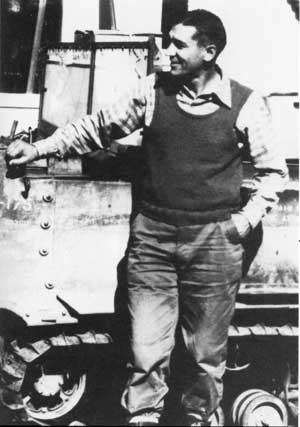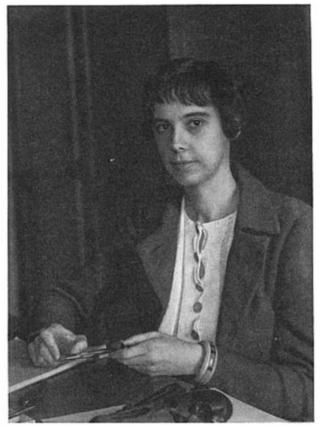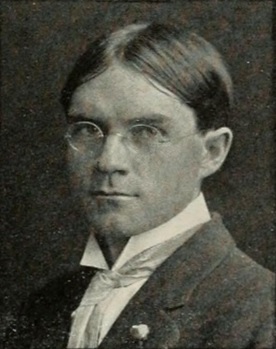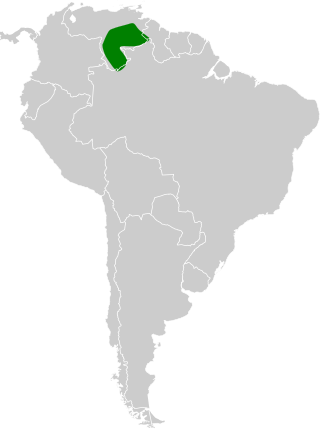Related Research Articles
Austin Loomer Rand was a Canadian zoologist.
Vertebrate zoology is the biological discipline that consists of the study of Vertebrate animals, i.e., animals with a backbone, such as fish, amphibians, reptiles, birds and mammals. Many natural history museums have departments named Vertebrate Zoology. In some cases whole museums bear this name, e.g. the Museum of Vertebrate Zoology at the University of California, Berkeley.

Joseph P. Grinnell was an American field biologist and zoologist. He made extensive studies of the fauna of California, and is credited with introducing a method of recording precise field observations known as the Grinnell System. He served as the first director of the Museum of Vertebrate Zoology at the University of California, Berkeley from the museum's inception in 1908 until his death.
David Burton Wake was an American herpetologist. He was professor of integrative biology and Director and curator of herpetology of the Museum of Vertebrate Zoology at the University of California, Berkeley. Wake is known for his work on the biology and evolution of salamanders as well as general issues of vertebrate evolutionary biology. He has served as president of the Society for the Study of Evolution, the American Society of Naturalists, and American Society of Zoologists. He was a member of the American Association for the Advancement of Science, the Linnean Society of London, the American Academy of Arts and Sciences, the American Philosophical Society, and in 1998 was elected into the National Academy of Sciences. He was awarded the 2006 Leidy Award from the Academy of Natural Sciences of Philadelphia.

Aldo Starker Leopold was an American author, forester, zoologist and conservationist. Leopold served as a professor at the University of California, Berkeley, for thirty years within the Zoology, Conservation, and Forestry departments. Throughout his life, Leopold was a public face for science. He was active in numerous wildlife and conservation groups and made significant research contributions in ornithology, mammalogy, and wildlife ecology. Leopold is notable for his ecosystem management paper, the Leopold Report, and his considerable presence in some of the most controversial wildlife issues, including national park wildlife policy, predator control, wildlife refuge, and fire policy.

McConnell's flycatcher is a species of bird in the tyrant flycatcher family Tyrannidae. It is found in the Guiana Shield, northern Brazil, Peru and Bolivia. Its natural habitats are subtropical or tropical moist lowland forests and subtropical or tropical moist montane forests.
Barbara Blanchard DeWolfe was an American ornithologist. She graduated with an undergrad in 1933 and obtained her PhD in 1939 both from UC Berkeley. She taught for several years and pioneered studies of avian life history and physiology on the white-crowned sparrow. Despite facing discrimination because she was a woman, she went on to publish over 30 works and was the 1995 recipient of the Cooper Ornithological Society’s Loye and Alden Miller Research Award, which is given in recognition of lifetime achievement in ornithological research.
Helen Frances James is an American paleontologist and paleornithologist who has published extensively on the fossil birds of the Hawaiian Islands. She is the curator in charge of birds in the Department of Vertebrate Zoology at the National Museum of Natural History in Washington, D.C.
Charles Congden Carpenter was an eminent naturalist and herpetologist who has won numerous awards for excellence as an educator, researcher, and communicator.
Dioscoro Siarot Rabor, also known as Joe Rabor, was a Filipino ornithologist, zoologist, and conservationist. Known as the "Father of Philippine Wildlife Conservation", he led more than 50 wildlife expeditions in the Philippines, authored 87 scientific papers and articles, and described 69 new bird taxa and numerous mammal species.

Richard Charles Banks was an American author, ornithologist and Emeritus Research Zoologist on staff with the Patuxent Wildlife Research Center run by the U.S. Geological Survey and stationed at the Smithsonian Institution in Washington, D.C. He is the founder of the Ornithological Council and known for his study of the migratory systems, patterns, and geographic variations of North American birds, primarily focusing on the research and analysis of Greater White-fronted Geese.

Oliver Payne Pearson, or "Paynie" to many that knew him, was an American zoologist and ecologist. Over a very active 50-year career, he served as professor of zoology at UC Berkeley and curator of mammals at the Museum of Vertebrate Zoology. Pearson is best known for his work on the role of predation on vole demography and population cycles, and for his piercing contributions to the biology of South American mammals, but his earlier studies on reproductive and physiological ecology are highly regarded as well.

Hildegarde Howard was an American pioneer in paleornithology. She was mentored by the famous ornithologist, Joseph Grinnell, at the Museum of Vertebrate Zoology (MVZ) and in avian paleontology. She was well known for her discoveries in the La Brea Tar Pits, among them the Rancho La Brea eagles. She discovered and described Pleistocene flightless waterfowl at the prehistoric Ballona wetlands of coastal Los Angeles County at Playa del Rey. In 1953, Howard became the third woman to be awarded the Brewster Medal. She was the first woman president of the Southern California Academy of Sciences. Hildegarde wrote 150 papers throughout her career.

Tracy Irwin Storer (1889–1973) was an American zoologist known for his contributions to the wildlife of California and the ecology of the Sierra Nevada. He was a professor of zoology at the University of California, Davis for over 30 years. He served as president of several biological societies, including the Cooper Ornithological Club, Society of Ichthyologists and Herpetologists, the Society of Mammalogists, and the Wildlife Society, and was a fellow of the California Academy of Sciences which in 1968 awarded him the Fellow's Medal, the academy's highest honor.

Loye Holmes Miller, was an American paleontologist and zoologist who served as professor of zoology at the University of California, Los Angeles, University of California, Berkeley, and University of California, Davis.
Carla J. Dove is an American researcher who specializes in identifying birds that have gotten trapped in airplane engines, known as bird strikes. She is currently the Program Manager for Feather Identification Lab in the Division of Birds at the National Museum of Natural History. Her work helps promote wildlife safety, as well as pave the way for the development of preventative measures that will decrease the chance of wildlife impacting airplanes. She has published over 40 articles on her research so far.
Nancy B. Simmons is an American zoologist, mammalogist, professor, and author. Specializing in bats, Simmons has conducted extensive research on the morphology and evolutionary history of numerous bat species. She is also the curator-in-charge of the Department of Mammalogy at the American Museum of Natural History and a professor at the Richard Gilder Graduate School.

The Sierra de Lema flycatcher or Tepui flycatcher is a species of bird in the tyrant flycatcher family Tyrannidae. It is found in highland areas, including the table-top mountains (tepui), of southern Venezuela and the neighbouring parts of Brazil and Guiana. Its natural habitats are moist montane forests.
Brina Cattell Kessel was an American ornithologist.

Jan Hamber is an American ornithologist and conservationist. While working at the Santa Barbara Museum of Natural History in the 1970s, she became involved in the effort to save the California condor, and has been credited with playing a major role in the condor's survival in the wild. Hamber was the biologist who tracked the last known California condor in the wild, placing the phone call that led to its capture at the beginning of the successful captive breeding program that saved condors from becoming extinct.
References
- ↑ "Mercedes Foster, Ph.D." www.usgs.gov. Retrieved 2018-08-09.
- 1 2 "Foster, Mercedes - Biography". www.pwrc.usgs.gov. Retrieved 2018-08-09.
- 1 2 "Mercedes S. Foster, Research Zoologist (USGS), Division of Birds, Department of Vertebrate Zoology, NMNH". vertebrates.si.edu. Retrieved 2018-08-09.
- 1 2 3 Foster, Mercedes. "M. S. Foster Curriculum Vitae" (PDF). Harvard-Smithsonian Center for Astrophysics.
- ↑ Robert William Dickerman, William Henry Phelps, Jr. (1987): Tres nuevos atrapamoscas (Tyrannidae) del Cerro de la Neblina Territorio Amazonas, Venezuela, Boletín de la Sociedad Venezolana de Ciencias Naturales, 41(144), pp. 27–32